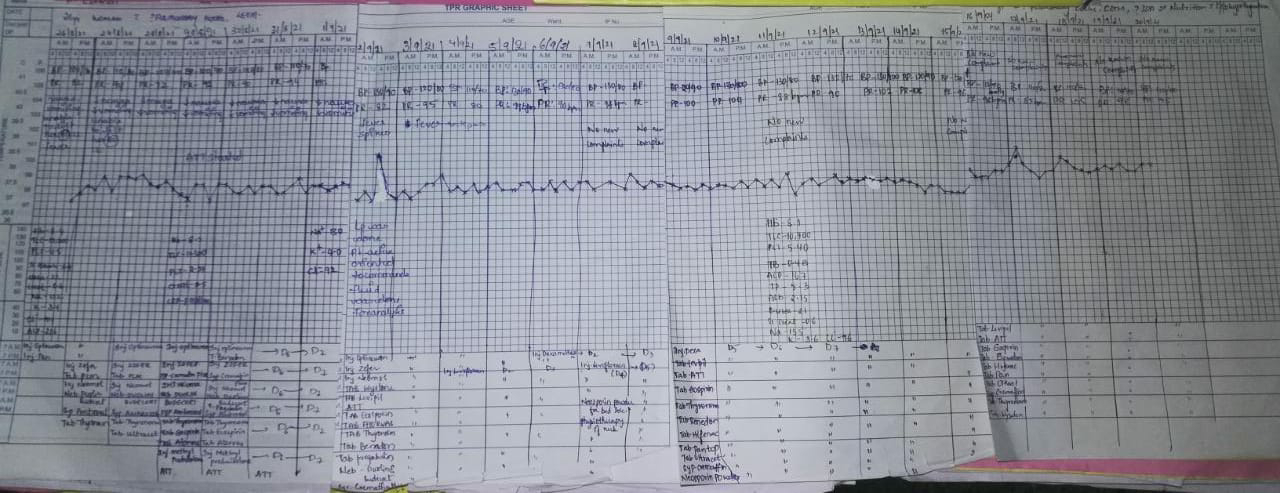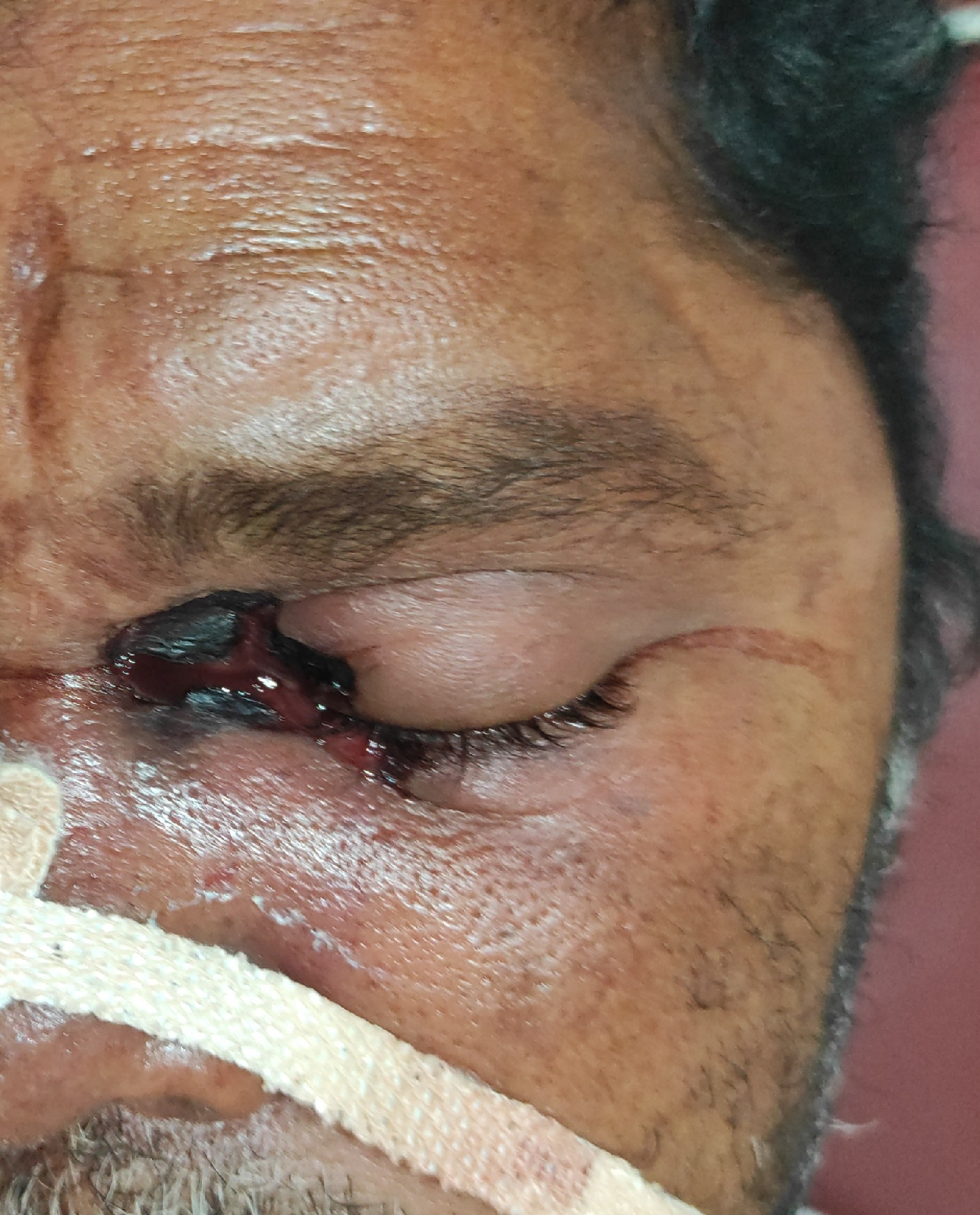CDP speaker notes
SLIDE 1:
Good afternoon
everyone. My name is Dr. Vinay , final year post graduate from department of
general medicine. Today I will be discussing about my field of interest
vasculopathy in metabolic syndrome to learn in depth about this vasculopathy in
metabolic syndrome.
Although obesity
related type 2 diabetes mellitus and sarcopenia have been increasing worldwide,
the associations among visceral fat accumulation and vascular outcomes in
type 2 DM remains
poorly investigated.
SLIDE 2 :
A 60year old gentleman from venugonda came to the general
surgery OPD with
Chief complaints of: swelling
and blackish discoloration of left foot 2nd toe since 20 days
(he was referred to general medicine for (HIGH BLOOD SUGAR
LEVELS) - After RAYS AMPUTATION has been done.
HISTORY OF PRESENTING ILLNESS:
Patient is a farmer by occupation. At the age of 20 years he
started working as a farmer to help his
father, over a gradual course of time he used to do all his work alone..
His daily routine work includes waking up at 5am which he
completes his daily morning activities, brushing , bathing, and other activities,
by 6am leaves to work.
At work he ploughs the field, watering the field ,sowing seeds
and fertilisers,removing weed plants. Later around 12:30pm he goes for lunch
which consists of rice with curries and takes break for 1 hour to sleep . later
he completes his work by 5pm and reaches home by 6pm. Completes his freshen up
activity and will have dinner consisting of rice with curries and goes to sleep
by 9pm.
Patient was apparently asymptomatic 3 years back , one fine day
when hes noticed tingling and burning sensation of bilateral sole of feet for
which he went to local RMP then he was diagnosed with Type 2 DM, since then he
was on tab metformin 500mg OD.
Intermittently he used to have similar episodes of burning
sensation of feet, which takes extra tablet (?pregabalin) relieves after some
time.
1 year back when he had c/o headache went to local hospital and
diagnosed with HTN and since then he was started on Tab Amlong 5mg po od
SLIDE 3:
Patient was apparently asymptomatic 20 days ago and then when
working at field he had small trauma later which he gradually developed
swelling over left 2nd toe followed by which ulceration occurred which was
sudden in onset gradually progressive.
Ulcer is associated with pain,which is on and off and dull
aching type . No aggravating factors but relieved with medication .
He also developed Blackish discolration of left 2nd toe which
was sudden in onset and progressive to involve whole 2nd toe .
(Referred to the general medicine department for high blood
sugar levels )
NO H/O fever, trauma, discharge from wound, vomiting,
abdominal pain, breathlessness
PT UNDERWENT RAYS AMPUTATION
SLIDE 5 :
At the time of presentation patient is conscious coherent and
cooperative and moderately built . ht 180cms and weight of 61kgs and BMI is
20.3 kg/m2 and his vitals are BP 120/80 mmhg, pulse rate was 86 bpm , on
systemic examination his his cardiovascular system and respiratory findings are
normal , his higher motor functions are normal.
SLIDE NO 6:
u SENSORY
SYSTEM EXAMINATION:
u POSTERIOR
COLUMN:
u Vibrations
: great Toe - Right
4.22 secs left
5.94 secs
u
Medial malleolus - 4.14 secs 4.86secs
u
Tibia shaft - 5 secs
6secs
u Joint
Position :
10%
10%
u Fine
touch :
Decreased Decreased
u Rombergs
sign absent absent
u SPINOTHALAMIC
TRACT:
u Crude
touch :
reduced reduced
u Pain
:
present present
u Temperature
: Normal Normal
u CORTICAL:
u Two point
discrimination: Right Reduced
Left Reduced
u Tactile
localisation: Right Lost Left Lost
u Graphaesthesia Right Lost Left lost
On further detailed examination of symptoms , findings are
reduced vibration and joint position more in favour of diabetic peripheral
neuropathy which is also a key initiating for diabetic foot ulceration.
SLIDE 7: The reason to take up the case though having very
little amount of visceral fat, with normal BMI and hip waist ratio is because
of Other metabolic disturbances such as htn,dm,dyslipidemia which is causing
further complications.
SLIDE 8:
These are the images of left foot after amputation of left foot
2nd toe after rays amputation.
SLIDE 9:
These are the sugar trends after admission in the hospital.
Total insulin requirement after admission for 24hrs is 30 units bolus regimen
and 20 units basal regimen.
SLIDE 10:
Histopathology of diabetic foot depicting microvessel (internal
diameter of vessel <150 – 200 micrometers) inflammation.
On further evaluation of microvessels and macrovessels , patient
is found to have hard exudates and mild retinopathic changes due to
uncontrolled diabetes, and peripheral neuropathy is present , No nephropathy
changes are noted.
And on macrovascular changes , Peripheral arterial disease is noted
with reduced blood flow due to atherosclerosis which is more prone in diabetes due
to altered metabolism of lipids and also due to acute inflammation caused by
adipokines which play central role in pathogenesis of metabolic syndrome. Literature
in this area is scarce and adipokines in development of atherosclerosis has
been studied and analysed very little so far.
SLIDE 11:
Metabolic syndrome is growing epidemic affecting most of the
adults. This complex , multifactorial disorder arising from metabolic
disturbances characterised by visceral obesity, dyslipidemia , hyperglycemia
,hypertension. another characteristic of metabolic syndrome is chronic low grade
inflammation of vessels and other systems which eventually contribute to
elevated risk of acute cardiovascular events.
Macrovessels are prone at
a later stage to atherosclerosis induced remodelling as a consequence of endothelial
and vascular wall injury and chronic inflammation. But in type 2 dm or
metabolic syndrome, animal studies showed that coronary microvessels undergo
inward hypertrophic remodelling , mesenteric microvessels undergo outward
hypertrophic remodelling that is vascular bed specific. From these studies we
can conclude that microvessels may undergo at early stages of disease and may
present an early subclinical culprit in pathogenesis of coronary microvascular
disease.
Slide 12:
Pathophysiology of microvessel inflammation , vascular
remodelling, disease progression.
Slide 11:
Micro and macro vessel complications
In 2 years of my project work , incidence of retinopathy is 44%,
neuropathy is 44%, and nephropathy is 36%. And incidence of CVA is 32%, CAD 32%
,PAD 24%
Slide 14:
Thesis related how BMI is affecting the diabetic control and
risk factor for Metabolic syndrome.
Slide 16:
In a recent study , meta analysis of 15 randomised control trials
An intensive glucose-lowering strategy resulted in a significant
17% reduction in retinopathy, 18% reduction in macroalbuminuria , 32% reduction
in end-stage renal disease (ESRD) and 13% reduction in non-fatal myocardial
infarction (NFMI) Based on HbA1c achieved at End of study, a significant 46%
reduction in retinopathy, 52% reduction in macroalbuminuria, 36% reduction in
(NFS) non-fatal stroke and a 22% reduction in all-cause mortality.
TAKE HOME MESSAGE:

